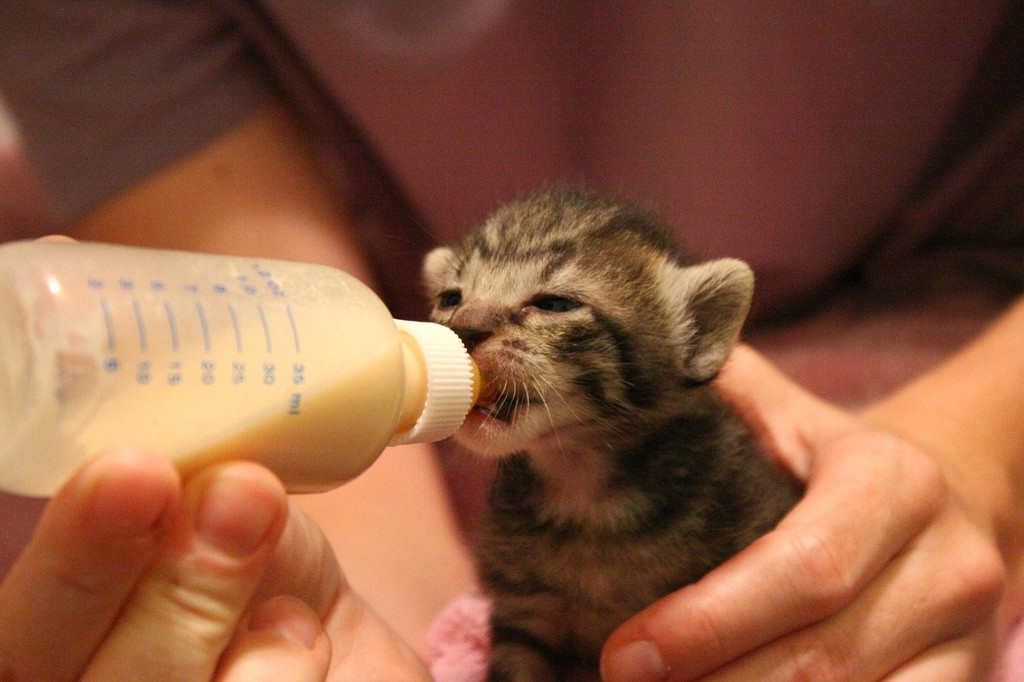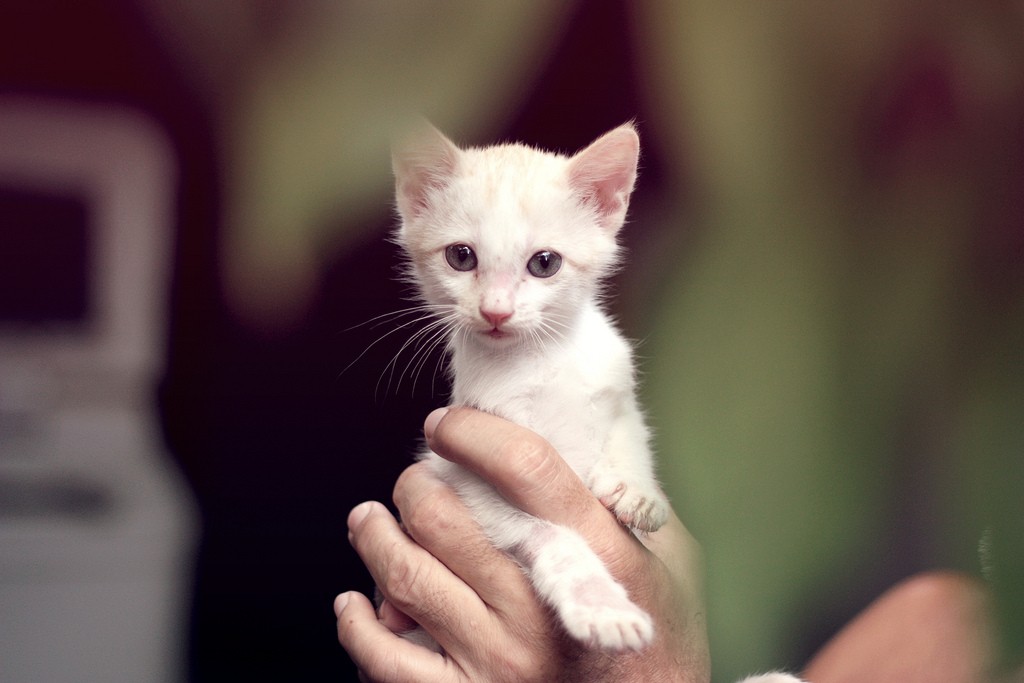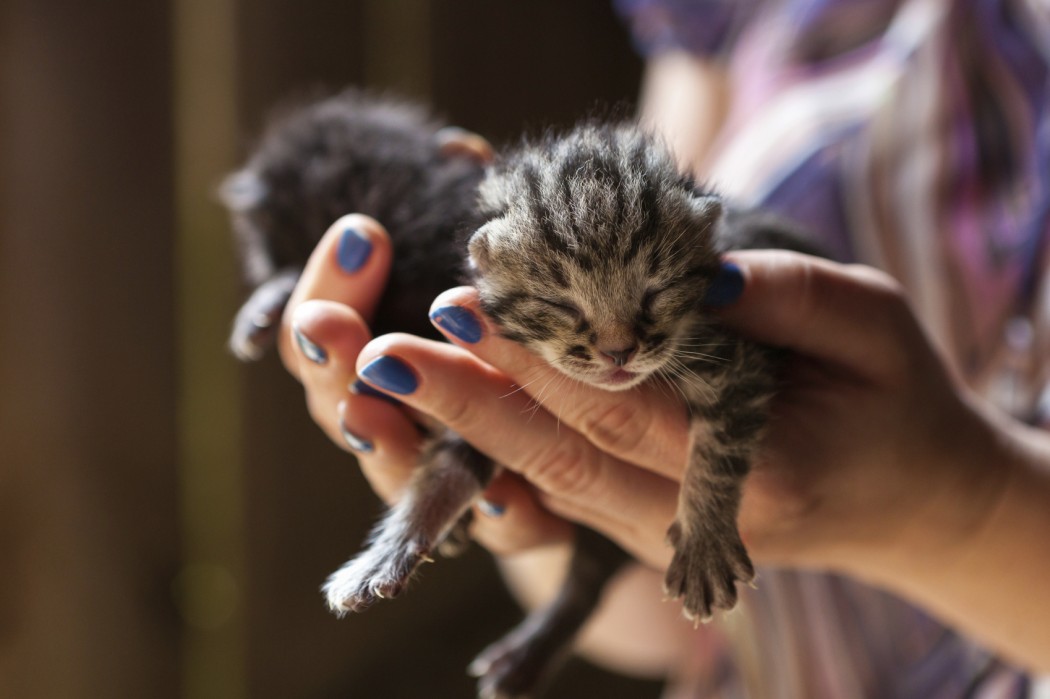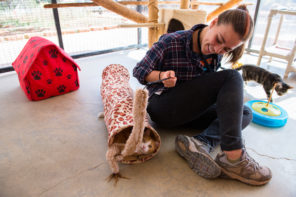Kitten season is upon us and as adorable as it sounds, all those tiny kitties add up to a big problem for animal shelters.
A single pair of cats and their kittens can produce as many as 420,000 kittens in only seven years, according to the Humane Society, and while some of these kittens may be adopted into forever homes, many others are euthanized because shelters simply don’t have the space or resources to care for them.
What can you do to help?
If you find stray kittens
With all the time you adventurers spend outside, you’re bound to happen upon a feral cat colony or perhaps even a litter of strays. Here’s what to do.
1. Wait. Your first instinct may be to scoop up those kittens and take them home, but if you want to do what’s best for them, resist this urge. Instead, back away and keep an eye on them. Their mother may simply be hiding because you’re nearby, or she could be hunting for food. She could also be in the process of moving her young to a safer place since this one is obviously frequented by humans.
As you wait, try to determine the kittens’ age. If they’re neonatal, meaning only 1 week to 4 weeks old (check out this handy kitten progression chart), then the kittens have the best chance of surviving if they’re with their mother. If you determine that the kittens are neonatal, be sure to allow at least six hours before moving them.
“If you find neonate kittens, don’t scoop them up and take them to the shelter. Leave them where they are and keep an eye on them,” said PetSmart Charities Program Manager Bryan Kortis. “It’s likely that the mother is around. That’s the biggest mistake people make.”

Resist the urge to immediately pick that kitten up. (Photo: Alexandra Zakharova/flickr)
2. Help. If their mother returns and seems friendly, Alley Cat Allies, a national advocacy organization dedicated to the humane treatment of cats, recommends that you take the mother and kittens indoors until the kittens are old enough to be weaned. Alley Cat Allies has advice for trapping a mother and her kittens in a variety of scenarios. However, if the mother appears to be feral, it’s best to provide food, water and shelter but otherwise leave the feline family alone.
If the kittens’ mother hasn’t returned after several hours, consider taking the kittens to a shelter or into your home — but only take them home if you’re prepared to provide them with round-the-clock care (see #3). You can place the kittens into a cat carrier if they’re approachable, or you can borrow a humane animal trap from a local rescue group.
Keep in mind that if the kittens you’ve stumbled across are four months old or older and appear to be healthy, they’re better off remaining with their colony. These kittens should be spayed/neutered, vaccinated, and returned to their outdoor home — a process known as trap-neuter-return, or TNR (see #4).
MORE: Take a shelter cat for a hike
3. Care. Socializing and caring for feral kittens can be extremely rewarding, but it’s also a very time-consuming process so be sure you’re prepared to take on both the responsibility and the financial cost. Keep in mind that you’ll be committing to weeks or even months of care, and if they’re neonatal kittens, you’ll have to feed them every two hours.
If you don’t have experience caring for kittens, it’s best to contact a local veterinarian, animal shelter or rescue group. Not sure who to call? If you live in the U.S. or Canada, check out this comprehensive list of resources from the Humane Society.
Committed to caring for those adorable furbabies yourself? Best Friends Animal Society’s kitten-care guide has a wealth of information on how to do everything from providing proper bedding to mixing up nutritious formula to feed them. However, in order to provide the best possible care, you should consult a veterinarian.
In addition to meeting all the kittens’ needs, you’ll also need to socialize them so they can be adopted.

Kittens must be bottle-fed every few hours. (Photo: kellinahandbasket/flickr)
If you want to help kittens in your area
Just because you haven’t stumbled upon a litter of kittens doesn’t mean you can’t help the felines in your area. Your local shelter could certainly use some assistance, or there may be a feral cat colony nearby that needs a caregiver. Here’s what to do.
4. Trap-neuter-return. TNR is the practice of humanely trapping free-roaming cats, sterilizing and vaccinating them, and returning them to their original habitat. The practice dates back to the 1950s, and it’s the most humane way to decrease the number of feral cats.
There are numerous benefits to TNR. In addition to bettering the lives of feral cats, it also improves public health and reduces the number of kittens born each year, which lowers shelter costs and opens up more cage space for adoptable cats.
Want to learn more about TNR and see how you can get involved? Check out Alley Cat Allies’ TNR guide and start improving the lives of outdoor cats.
MORE: Have an indoor adventure with your cat
5. Volunteer. Countless kittens are taken to shelters every year, and while kittens are certainly desirable to potential adopters, many shelters simply don’t have the resources to care for all of them, especially neonatal kittens that require round-the-clock care. Often, shelters rely on trained volunteers and foster cat parents to take care of these tiny kitties, and if such people aren’t available, the kittens may be euthanized.
By getting trained and volunteering your time, you’ll relieve some of this burden on shelters. And in addition to saving kittens’ lives, you’ll also be helping other shelter pets by leaving more cage space available.
Just how overwhelming can kitten season be for shelters? Watch the adorable video below to find out.
6. Adopt. One of the best ways you can help save a kitten’s life is to provide him or her with a loving home. Visit your local shelter or check out AdoptaPet.com, North America’s largest non-profit pet adoption website, and find yourself a new furry best friend — and future adventure partner. After all, the best time to leash train a cat is during kittenhood.
And remember: Always adopt. Don’t shop.

Adopt and give a homeless kitten a happily ever after. (Photo: Helga Weber/flickr)




